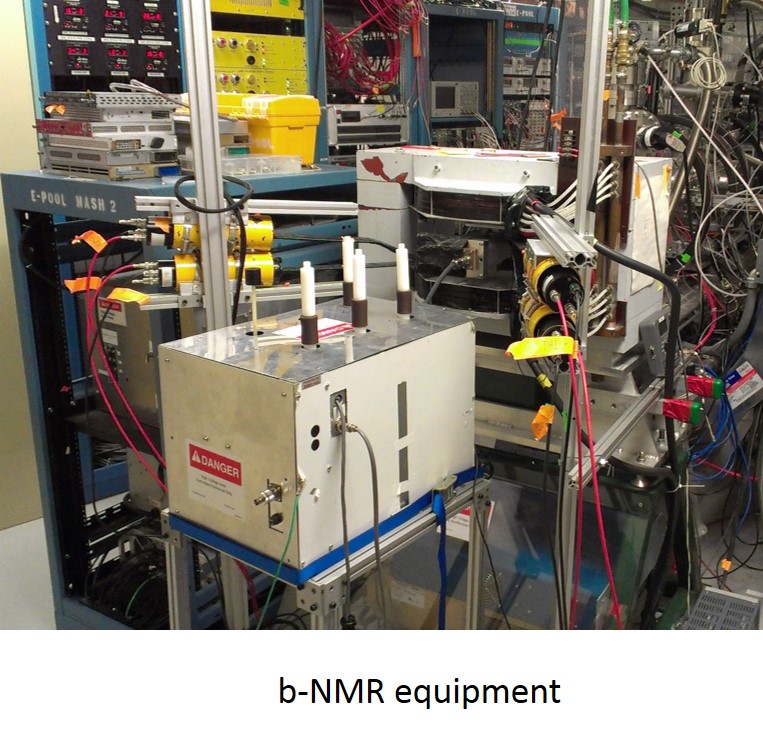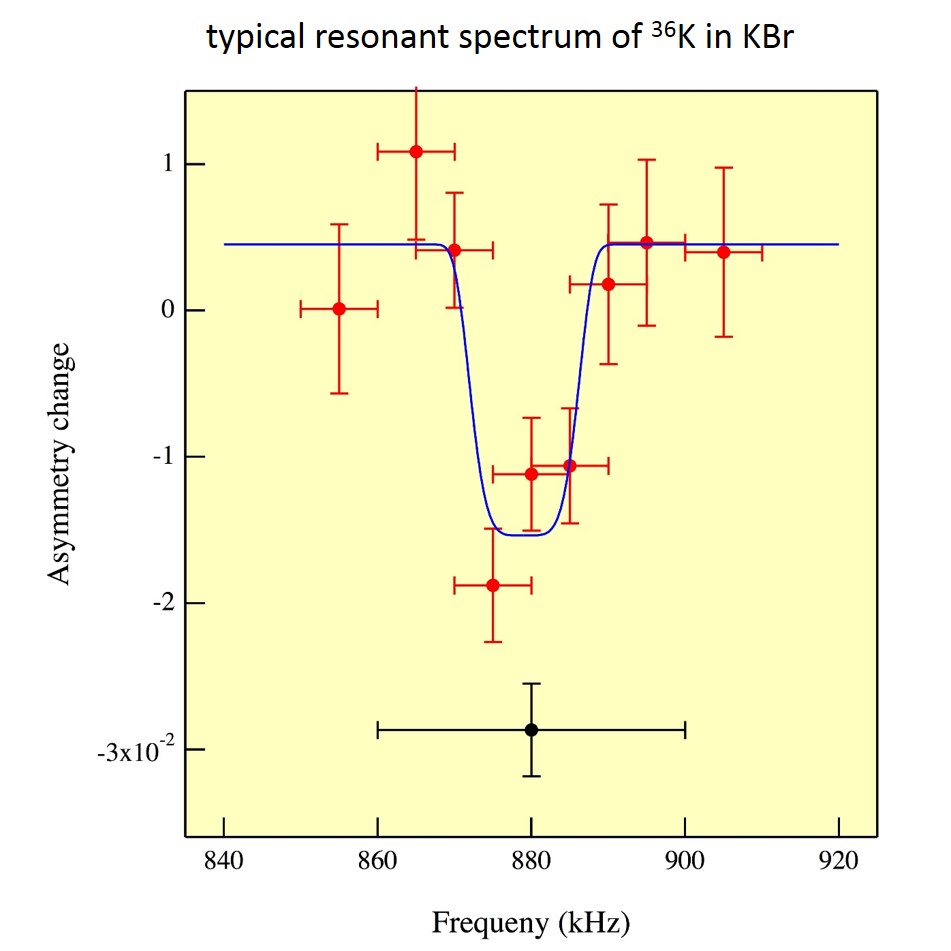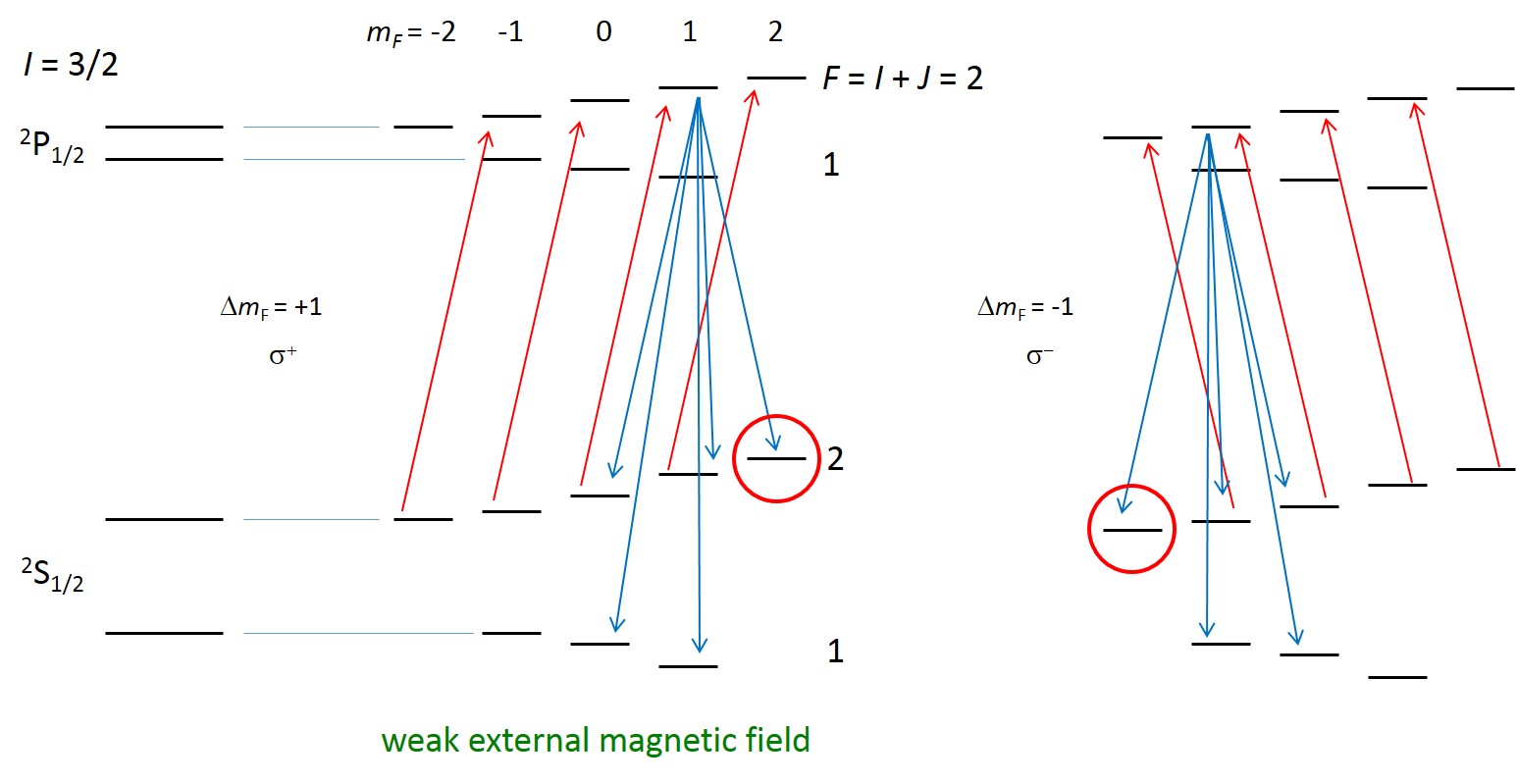Beta NMR
One of the most sensitive methods for determining the electric quadrupole and magnetic dipole moments is by beta-ray detecting Nuclear Magnetic Resonance (beta-NMR) technique, which requires nuclear polarization of the state under study. Optical pumping with circularly polarized light is employed to produce polarization. A figure of merit (FoM) to optimize beta-NMR experiments is given by FoM=P2Y, where P is the magnitude of polarization and Y is the production yield of the nucleus. Although a production rate decreases, as the nucleus of interest goes away from the beta-stability line in the nuclear chart, even a slight increase in polarization helps to maintain the sensitivity to detect a NMR signal, owing to the P2 dependence of the FoM. In short, the large polarization by means of optical pumping can be exploited in beta-NMR measurements with low-intensity radioactive isotope beams (RIBs).
Beta-NMR technique relies on detecting beta particles emitted by decaying radioactive nuclei. Beta emission from randomly oriented decaying nuclei is isotropic. If the nucleus is spin-polarized, on the other hand, the angular distribution of the beta particles is asymmetric, relative to the polarization axis. The angular distribution is given by W(Θ)~1+APcos(Θ), where A is the asymmetry parameter of the beta decay, solely determined by the structure of the nuclei associated with the decay and, Θ is the angle between the momentum of emitted beta particle and the polarization axis.
The polarized RIB is stopped on a surface of a single crystal under a strong magnetic, applied parallel to the polarization axis to maintain the polarization in the crystal. An application of a radio frequency (RF) can induce transition of between adjacent Zeeman levels at the resonant frequency (Larmor Frequency [v_L]). The populations will be redistributed and the polarization and thus the asymmetric beta-ray distribution will no longer exist. A resonance signal is obtained by measuring the number of beta particles using detectors placed at 0 degrees (up) and 180 degrees (down) relative to the polarization direction. The resonance frequency v_L, is related to the magnetic dipole moment and the nuclear spin by hv=H/I. Therefore magnetic dipole moment can be deduced if the nuclear spin is known.
The quadrupole moment measurements require an electric field gradient (q), for which internal fields provided by a single crystal are used in the beta NMR, superimposed on the external magnetic field H. The evenly separated energy levels due to the interaction become uneven and 2I separate transition frequencies result. The electric-quadrupole interaction may be reguarded a perturbation to the main magnetic-dipole interaction. The electric quadrupole coupling constant eqQ/h can be determined from locations of resonance frequencies.



Sources
[1] P. F. Mantica et al., Phys. Rev. C 55, 2501 (1997).
[2] M. Keim et al., Eur. Phys. J. A 8, 31 (2000).
[3] C. D. P. Levy et al., AIP Conf. Proc. 980, 273 (2008).
[4] J. S. Berryman, Ph.D. Thesis, Michigan State University (2009).